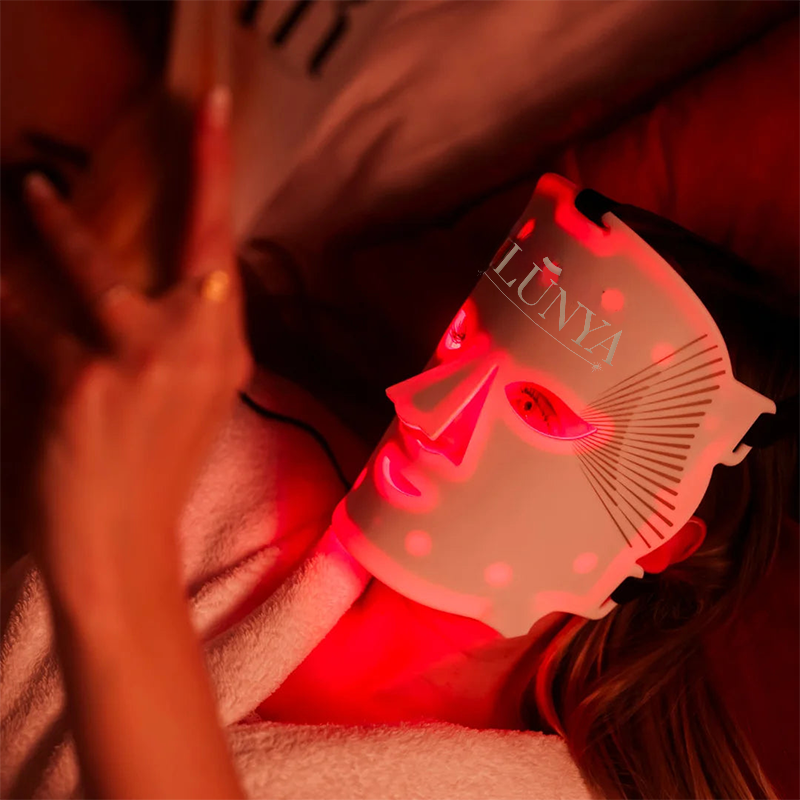Photobiomodulation, also known as LED therapy, is garnering increasing attention in the cosmetic field due to its numerous benefits for skin health and appearance. But is this method truly effective? What feedback do users of light therapy devices share? Let's explore the advantages reported by enthusiasts of at-home LED masks.
Understanding Photobiomodulation
Photobiomodulation involves the use of low-energy light to stimulate cellular activity. Depending on the applied wavelength, skin cells can accelerate their regeneration, promoting effects such as healing, increased collagen and elastin production, enhanced hydration, skin rejuvenation, and even stimulation of hair regrowth.
What Benefits Can Be Expected from LED Phototherapy ?
Scientific research has highlighted several advantages of LED phototherapy:
-
Improved blood circulation.
-
Increased synthesis of collagen and elastin, leading to firmer skin and prevention of wrinkles and fine lines.
-
Accelerated cellular regeneration, aiding skin damaged by aging or external aggressions to regain a radiant and even complexion without resorting to invasive procedures.
-
Reduction of pigmentation spots, age marks, and stretch marks.
-
Enhanced healing process and reduction of acne-related inflammations through regulation of sebaceous gland activity.
-
Alleviation of scalp inflammations, assisting in combating hair loss and stimulating regrowth.
Testimonials: What Do Photobiomodulation Users Say ?
User experiences are invaluable for assessing the effectiveness of LED treatments across different skin types. Before-and-after results are sometimes noticeable after just a few sessions.
Anti-Aging Effects: Impact on Wrinkles and Skin Aging
Fans of anti-aging LED masks appreciate their ease of use and the rapid rejuvenating effects observed on their skin.
-
Tanev O.: "The mask's effect is impressive. My skin feels rejuvenated, luminous, and well-hydrated. It's easy to use and requires minimal time."
-
Fabienne: "Excellent mask with visible effects from the first uses. The best aesthetic investment I've made. Fresher complexion, reduced signs of fatigue, and diminished fine lines. A true discovery..."
Acne Treatment: An Innovative Approach
Regarding the use of photobiomodulation to treat acne and scars, feedback is also very positive:
-
Emelyne: "Visible results from the first session on my skin's texture and the spots left by pimples."
-
Sirè F.: "Very pleasant mask to wear, significantly reduced the inflammation of my acne, improved my skin's texture, and revived its glow."
Improvement of Scars and Skin Texture
LED therapy provides a radiant complexion in just a few sessions.
-
Florence: "After three weeks of regular use, the results are astonishing: tightened pores, reduced redness, more even complexion."
-
Ophélie G.: "My skin is more luminous, spots and irregularities are gradually fading."
-
Frédérique: "Very easy to use, only 10 minutes to integrate into my usual skincare routine. More uniform skin, very satisfied with my purchase."
Safety and Usage Precautions
Photobiomodulation is a non-invasive and painless method, presenting minimal risk of side effects. However, for optimal effectiveness and safe use, it is recommended to:
-
Adhere to exposure time: excessive duration does not necessarily enhance results.
-
Maintain a regular usage frequency, ideally three times a week, to achieve effects comparable to those of in-clinic sessions.
What Do Scientific Studies Say About Photobiomodulation ?
The rise of photobiomodulation has led to numerous studies aiming to understand its mechanisms and potential benefits.
Demonstrated Anti-Aging Effects
A 2004 study on photoaging highlighted the benefits of LED therapy in combating signs of aging and oxidative stress: reduction of wrinkles, pigmentation spots, improved skin elasticity and firmness.
Proven Effectiveness in Acne Treatment
In 2000, a British dermatologist studied the use of photobiomodulation to treat acne. The results showed that 76% of patients experienced improved healing and reduced lesions thanks to the combination of blue (antibacterial) and red (anti-inflammatory) lights.












